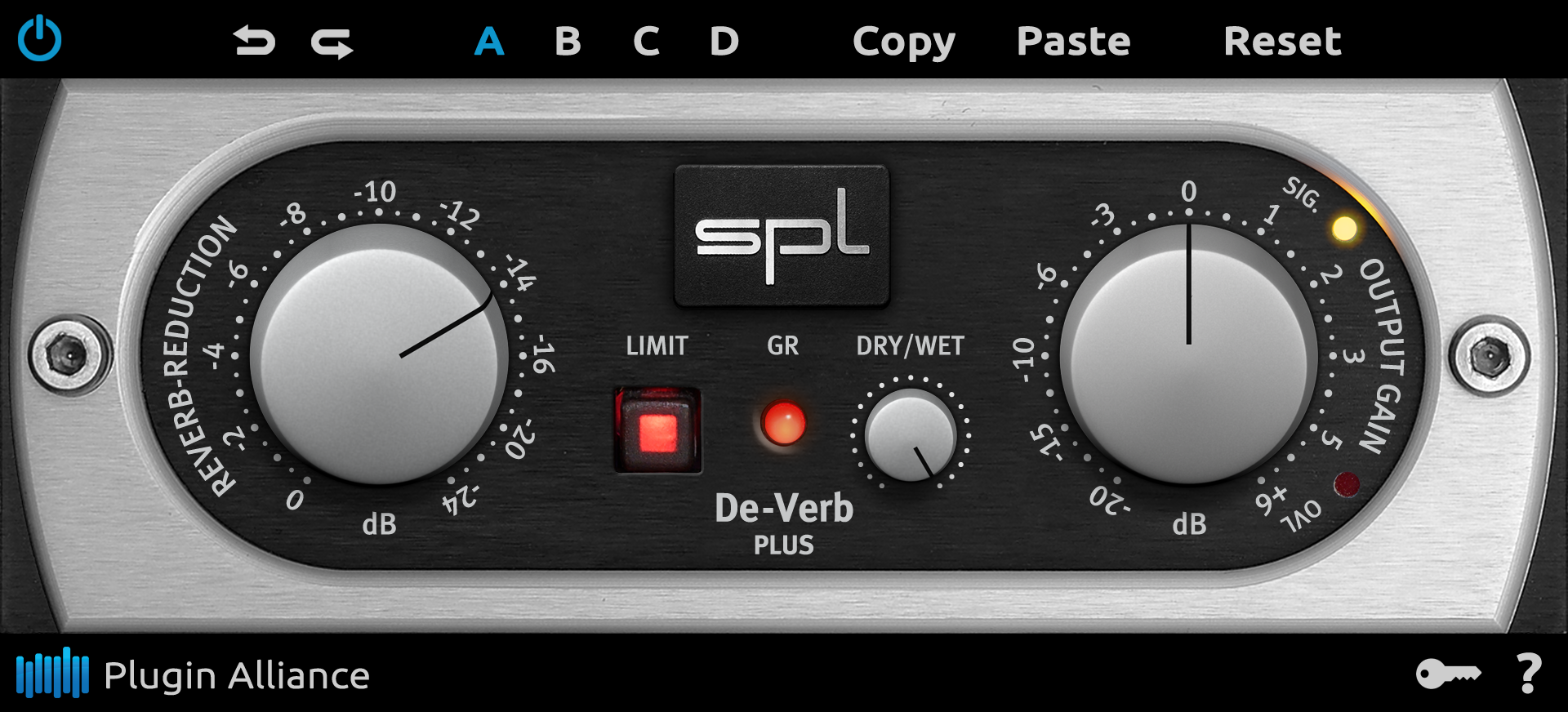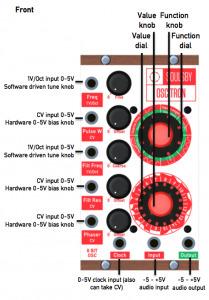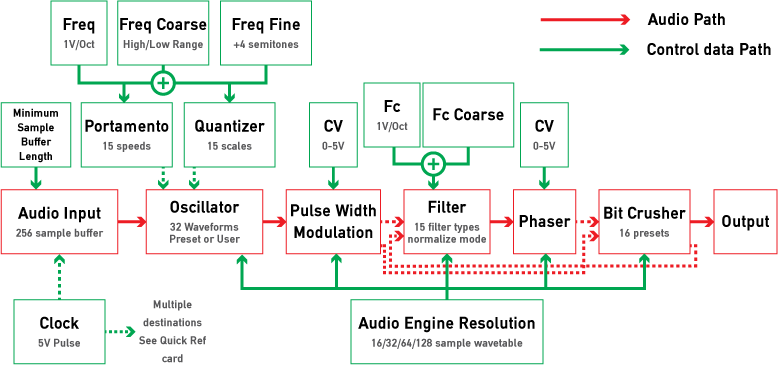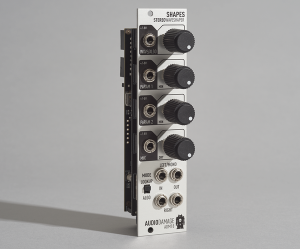
Designed to be the nucleus of a synthesizer, the Double Helix Oscillator is a modular waveform generator like no other. A set of beefy, analog oscillators paired with voltage controlled shape contouring, deep modulation and a performance-ready voltage controlled modulation matrix create a dynamic, analog waveform playground.
At the core of the Double Helix are two, wide-range precision oscillators. The primary oscillator includes a full complement of waveforms and multiple modulation options. The secondary oscillator offers a more focused set of waves and frequency modulation. Both oscillators reach deep into LFO range and can be used as voltage-controlled modulation sources.
The contour section of the Double Helix Oscillator features a highly tuned wavefolder paired with an exclusive dynamic impulse low pass gate. The contour signal chain starts with a two-channel mixer. This allows multiple waveforms or multiple oscillators to be combined before passing though the contour section. The first half of the contour section is a voltage-controlled, 6-stage wavefolder used to add odd harmonics to the incoming waveform. The timbre and timbre CV controls set the density and amplitude of the folds. When processing a sine wave, the wavefolder creates a spectral change from zero harmonics to square, with an infinite harmonic series.
The second half of the contour section is a dynamic impulse low pass gate. The effect of the low pass gate is similar to pairing a low pass filter and VCA together. As the dynamics control is opened, the filter adds harmonics and the VCA increases the amplitude of the waveform. As the dynamics control is closed, the filter removes harmonics and the VCA decreases the amplitude of the waveform. This pairing mimics how sound behaves in the real world creating a more naturally tonal response. The impulse input adds the ability to strike or ping the low pass gate circuit creating a very organic, percussive sound. The decay time of the impulse input is set by the dynamics response control allowing the strike to be tuned to a specific musical context.
The modulation section includes an LFO offering simultaneous sine, square, and random waveforms. A noise source is also available for audio or modulation use.
A pair of voltage-controlled routers manage all the CV inputs creating a dual, voltage controlled modulation matrix perfect for complex signal paths, experimentation, and live performance. The matrix consists of two voltage-controlled amplifiers designed to control the modulation amount inputs that can be routed to any of the Double Helix CV inputs. Each of the CV inputs can be switched to channel a, bypass, or channel b and mixed with a dedicated CV input.
- Panel size: 28hp
- Depth: 37mm
- Power Usage: +12v 223mA, -12v 205mA
- Does not require +5v



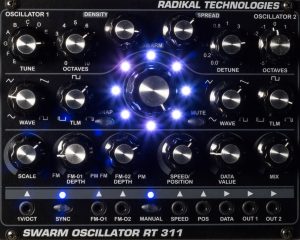

 The Attacker Plus Microplug presents part of the same stunning envelope shaping supplied by SPL’s treasured Transient Designer hardware, hitting a home run with software aficionados by replicating the edge and punch provided by the original unit’s ATTACK knob. Indeed, it uses the same so-called Differential Envelope Technology that revolutionized dynamic processing with its level-independent methodology. More meaningfully, though its ATTACK knob lets users dial in all the transient punch needed, Attacker Plus also sports soft peak limiting (LIMIT) access and a DRY/WET control, affording total flexibility across a wide range of material with worry-free workflow in the digital world. With over a decade of hardware modelling experience, Brainworx bestowed a core algorithm upon Attacker Plus that more closely matches the behavior of the original Transient Designer hardware than ever before. Better still, working with Attacker Plus could not be simpler — all attack events can be amplified regardless of signal level, yet such simplicity does not prevent seemingly endless possibilities for studio and live applications. Attacker Plus amplifies just the attack curves of a sound event by focusing on the initial transient instead of specific frequencies to allow instruments to be mixed at lower levels, which, in turn, opens up space in the mix while preserving the relationship between tracks, for example; emphasize the attack of a kick drum or loop to increase power and presence in the mix; adjust apparent ‘distance’ of a microphone by varying the ATTACK values; increase the attack of guitar sounds for in-your-face tone-shaping — anything and everything is possible (within reason)!
The Attacker Plus Microplug presents part of the same stunning envelope shaping supplied by SPL’s treasured Transient Designer hardware, hitting a home run with software aficionados by replicating the edge and punch provided by the original unit’s ATTACK knob. Indeed, it uses the same so-called Differential Envelope Technology that revolutionized dynamic processing with its level-independent methodology. More meaningfully, though its ATTACK knob lets users dial in all the transient punch needed, Attacker Plus also sports soft peak limiting (LIMIT) access and a DRY/WET control, affording total flexibility across a wide range of material with worry-free workflow in the digital world. With over a decade of hardware modelling experience, Brainworx bestowed a core algorithm upon Attacker Plus that more closely matches the behavior of the original Transient Designer hardware than ever before. Better still, working with Attacker Plus could not be simpler — all attack events can be amplified regardless of signal level, yet such simplicity does not prevent seemingly endless possibilities for studio and live applications. Attacker Plus amplifies just the attack curves of a sound event by focusing on the initial transient instead of specific frequencies to allow instruments to be mixed at lower levels, which, in turn, opens up space in the mix while preserving the relationship between tracks, for example; emphasize the attack of a kick drum or loop to increase power and presence in the mix; adjust apparent ‘distance’ of a microphone by varying the ATTACK values; increase the attack of guitar sounds for in-your-face tone-shaping — anything and everything is possible (within reason)!